#Harriet Hosmer
Explore tagged Tumblr posts
Text
The Sculptress and the Empress: Harriet Hosmer and Elisabeth of Austria
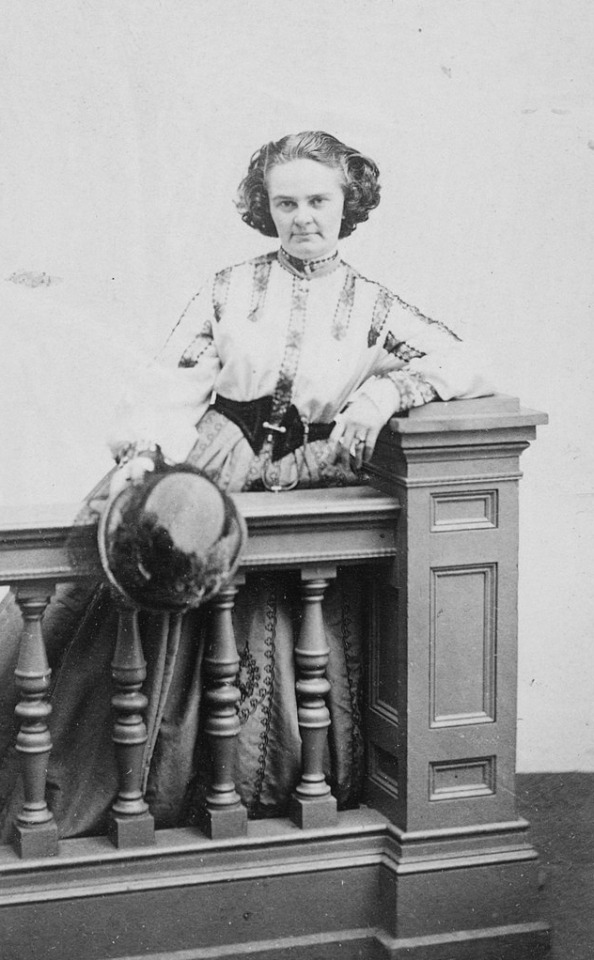
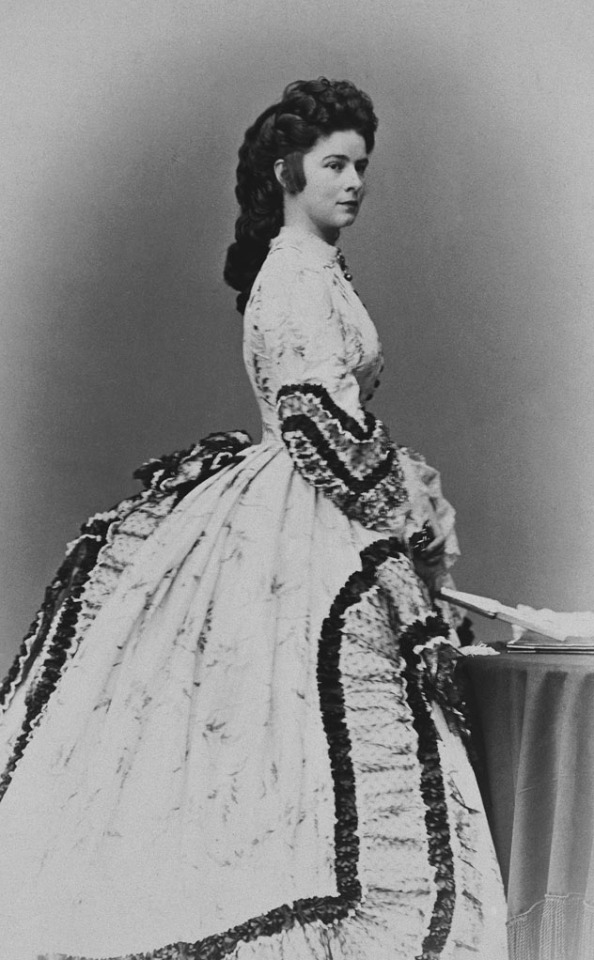
Some months ago I wrote a post about the friendship (and maybe even more) between Queen Marie Sophie of the Two Sicilies and sculptor Harriet Hosmer. Back then I had promised a second part about another of the royal acquaintances of Harriet: Elisabeth of Austria. Better late than never, here it is!
Harriet met Elisabeth during the later’s stay at Rome during December 1869. The Empress of Austria had gone to accompany her sister Marie at her confinement, despite not being the most prudent move given that relations between Austria and the Kingdom of Italy were still tense. But Elisabeth went anyway, straight from Trieste to Rome by sea (and thus discretely snubbing the King of Italy). In Harriet’s published correspondence we find a first mention of the empress in a later to her friend Wayman Crow dated February 1870:
The Queen of Naples (“the lovely Queen,” as Mr. Longfellow calls her) is looking uncommonly handsome. She sent for me last Sunday to show me her new horse, a present from her sister (the Empress of Austria whose own pet saddle horse it was), and really it is the most beautiful thing I ever saw on four legs...
Elisabeth visited Harriet at her studio. Harriet said of her that:
The fame of her beauty was European, and when I saw her I felt that this fame had not been exaggerated. One day, being in the Queen [Marie Sophie]'s boudoir with these two distinguished ladies, who were looking particularly picturesque, I thought mortal eye had never witnessed a fairer duet of loveliness, for the Queen was as beautiful as the Empress, both possessing that nameless grace which we all recognize and which no one can describe, an air of highest distinction. One charm of the Empress was her beautiful voice, sounding like a sweet silver bell...
One of the prettiest stories I ever heard of her was connected with a visit to a certain insane asylum. Her Majesty was shown through various wards, but one door was closed. Upon asking why she was not allowed to enter the ward, one of her ladies in waiting explained that there was a patient inside who fancied she was the Empress of Austria. “Oh, I understand,” said the Empress, “Pray let me see her”; and, on being admitted, humored the poor woman's fancy, and treated her with all the consideration due herself.
According to the editor of Harriet's correspondance, Cornelia Carr, she had “a beautiful photograph of the Empress with one of her great staghounds lying at her feet, and still another photograph which she gave her of herself and a favorite horse”. The photography with the staghound is likely this one:
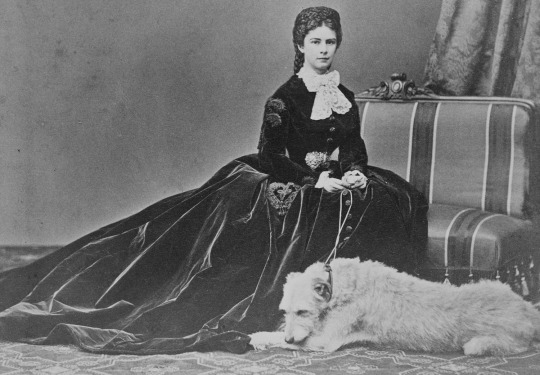
Harriet even made a sculpture of the dog; sadly I'm not aware of where this statue is now:
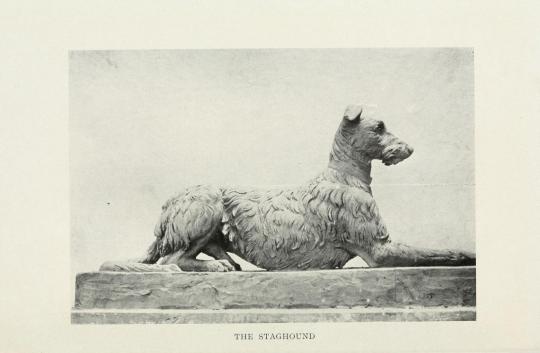
There are many images of Elisabeth riding, so I'm not sure which one Harriet had. But the next scene involving said photograph is narrated by Harriet's editor:
“What do you think of that photograph?” said she.
“This photograph does not do your Majesty justice,” Miss Hosmer replied.
“Oh,” said the Empress, for her modesty was as great as her beauty, “don't look at me, look at the horse. ”
Which sounds very in character for the empress.
Elisabeth promised Harriet that “If you come to Vienna, I will show you my horses and my dogs and all my pretty things.” But Harriet never went to Vienna, and she and Elisabeth never saw each other again.
Source:
Carr, Cornelia (1912). Harriet Hosmer: letters and memories
#omitted the shaker hats letter because I already mentioned it in the other harriet post#empress elisabeth of austria#harriet hosmer#queen marie sophie of the two sicilies
33 notes
·
View notes
Photo

Harriet Hosmer, Augustus Robin, 1873
6 notes
·
View notes
Text
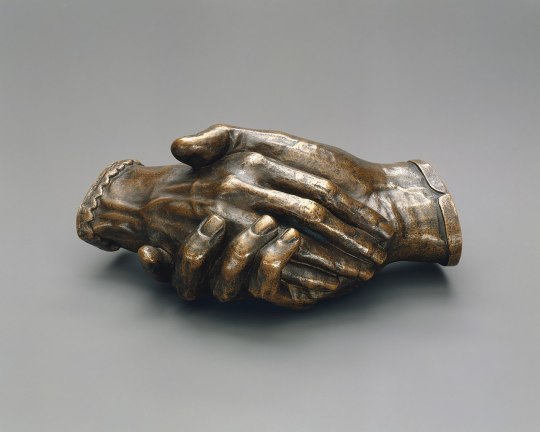
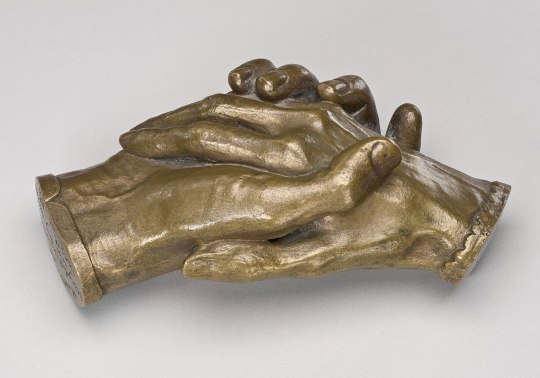
Clasped Hands of Robert and Elizabeth Barrett Browning, by Harriet Hosmer (1853)
#hands#art#19th century#19th century stuff#sculptures#1800s#harriet hosmer#victorian#victorian era#risorgimento era#risorgimento#eighteen hundreds#second half#19thcentury stuff#nineteenth century#favs
4K notes
·
View notes
Text
HARRIET HOSMER // SCULPTOR
“She was a Neoclassical sculptor, considered to be probably the first female professional sculptor. She pioneered a process for turning limestone into marble and lived in a fascinating expatriate colony in Rome. Hosmer was from Massachusetts and determined early on to be a sculptor. When she was denied access to Boston Medical School to study anatomy she moved to St Louis and took classes there. She had to go to Rome to be allowed to work with live models. In Italy she hung out with Nathaniel Hawthorne, Bertel Thorvaldsen, William Makepeace Thackeray, Georges Eliot and Sand, Elizabeth Barrett and Robert Browning at Casa Guidi. For twenty-five years she was romantically involved with Louisa, Lady Ashburton.”


1 note
·
View note
Text



Harriet Hosmer, Clasped Hands of Robert and Elizabeth Barrett Browning, 1853
Harriet Goodhue Hosmer (October 9, 1830 – February 21, 1908) was a neoclassical sculptor, considered the most distinguished female sculptor in America during the 19th century. She is known as the first female professional sculptor. Among other technical innovations, she pioneered a process for turning limestone into marble. Hosmer once lived in an expatriate colony in Rome, befriending many prominent writers and artists. Via Wikipedia
1 note
·
View note
Text
Art and Pride
As Pride Month comes to a close, Delayne, our Arts Administration blogger, highlights some queer artists throughout history (1850s-present) and works deserving of our attention. #MarywoodArt #ArtHistory #QueerArtHistsory #ArtsAdministration
As we’re nearing the end of June, I thought I should close out Pride Month by highlighting a few queer artists and their works. Sexuality and gender identity are major driving forces in any artwork whether consciously or unconsciously included, and the specific struggle of LGBTQ+ artists has for generations inspired a unique lens in creating. It is important to remind ourselves of artists that…

View On WordPress
#androgynous#Art#Claude Cahun#feminine#genderless#Harriet Hosmer#inspiration#June 2023#LGBTQ+ artists#LGBTQIA+#marble#Marcel Moore#Marywood Art#Marywood Art Department#Marywood University#Marywood University Art Department#masculine#Neoclassical#Photography#pride month#queer art#Sculpture#self-portrait photographs#South African#visual activism#Where Creativity Works#Zanele Muholi
1 note
·
View note
Text

Harriet Hosmer, Will o' the Wisp, modeled 1858, marble.
1 note
·
View note
Text

The Sleeping Faun by Harriet Goodhue Hosmer, circa 1864-70
8 notes
·
View notes
Text

Clasped Hands of Elizabeth and Robert Browning
Artist: Harriet Goodhue Hosmer
Date: 1853
Medium: Plaster
7 notes
·
View notes
Text









Random PNGs, part 153.
(1. Dried poppy flower, 2. "Clasped Hands of Robert and Elizabeth Barrett Browning" by Harriet Hosmer, 3. Antique mourning brooch, 4. She-wolf figure from 16th century, 5. "Ogling Skull" by Julien-Adolphe Duvocelle, 6. Chalice of thorns, 7. Fungus Beetle, 8. Rapanui "Birdman boulder" from 1750-1875, 9. Bat tray.)
3K notes
·
View notes
Text

Harriet Goodhue Hosmer, 1830-1908
Zenobia, Queen of Palmyra, ca.1852/62, marble (Inscribed on the back: "HARRIET HOSMER / FECIT ROMAE"), 86.4×57.2×31.8 cm
The Art Institute of Chicago, Inv. 1993.260
156 notes
·
View notes
Note
so i wanna start reading about elisabeth and i saw someone recommend Martyrdom of an Empress. Do you think It's a good book??
Hello! No, I don't think it's good at all. It's honestly baffling that's even recommended in this day.
The Martyrdom of an Empress was a book published in 1899 in London by an anonymous author who claimed to have been a close confidant of Elisabeth; years later the author was identified as being Marguerite Cunliffe-Owen (a person who was not part of the empress' entourage). It's technically one of the first "biographies" of Elisabeth, but it's so fictionalized that I don't even think it counts as one. I've tried to read it fully before just to be able to track down which myths about Elisabeth originated here, but I just get so exasperated by the amount of false information it contains that I can't make it pass the first chapter.
Again, I don't understand why would anyone even consider this book as a good source to learn about Elisabeth. That it was mostly gossip with fiction was well known and harshly pointed as soon as the book was out, as this fragment of a review by W. T. Stead, published in the The Review of Reviews in August 15 of 1899, show:
She [the author] represents herself as having been the friend and confidante of the Empress, and as having been her companion when she sojourned in Brittany. On that occasion the Empress, she says, was lodged in the ruined chateau of X. on the Breton coast— a chateau which belonged to her own family. But notwithstanding all this intimacy with the Empress— an intimacy so great as to allow her to address the Crown Prince Rudolf as "Master Rudie"—she has not hesitated to print for the amusement of a somewhat cynical world all the scandalous chronicles of the Austrian Court. It is also somewhat curious that most, if not all, of her revelations have been the common property of Viennese gossips for the last twenty years. The book is interesting reading to those to whom the subject is entirely new, but it is something of a tax upon our credulity to be asked to believe that all the familiar anecdotes of the Court were personally retailed to the sympathetic ear of this confidante, who was so little worthy of her trust as to pour them forth to minister to the curiosity of the world.
I think the worst (and saddest) thing about this book is that, while the author goes above and beyond to paint Elisabeth as a saint who lived devotedly to serve others, she also makes this claim with no shame:
Baroness Adolph Rothschild, whose beautiful villa of Pregny is one of the most exquisite spots on the banks of the lake of Geneva, had once been very kind to the Empress's favorite sister, the ex-Queen of Naples (...). Elizabeth never forgot this, and although she had a well-defined dislike for Israelites—with the exception of the poet Heine, whom she admired greatly—yet when she found herself so close to Pregny she decided to go and call upon Baroness Rothschild (p. 251).
Elisabeth knew Julie Rothschild through her sister, that much is true. She however was not antisemitic, but it seems that for Cunliffe-Owen it was just unacceptable that her perfect Christian heroine was in good terms with a Jewish woman, so just in case she feels the need to clarify she disliked all of them (except Heine. Make it make sense).
Btw we actually know what Baroness Rothschild thought of this book, thanks to a letter written by Harriet Hosmer, American sculptor who was also friends with Elisabeth's sister Queen Marie:
TO MRS. CARR. Watertown, Aug. 28, 1898? [sic, this letter must be from 1899, the year of the book's publication]
Dear C: I have a letter from the Baroness Adolphe, which I want to show you. She says of the "Martyrdom of an Empress" exactly what I thought she would, that it is a romance, containing certain well-known facts, and the rest fiction. The Baroness was a great friend of the Empress. She says that Countess Trani, the Empress' sister, told her that she knew of no friend of her sister's who entertained her in Brittany or who was with her as described in the book. (1912, p. 348)
While this letter is very much a "she says that she says that", I still find it way more trustworthy that anything that's written in The Martyrdom of an Empress.
If you wanna know which books I do recommend to learn about Elisabeth, I answered that here!
Sources:
Carr, Cornelia [ed.] (1912). Harriet Hosmer, letters and memories
Cunliffe-Owen, Marguerite (1899). The Martyrdom of an Empress
Stead, W.T (1899, August 15). "The Martyrdom of an Empress": Austrian History a la "Family Herald", The Review of Reviews for Australasia
#i hope i didn't come off as to harsh op - nothing against you! i just want for people to stop taking this book serious#empress elisabeth of austria#the martyrdom of an empress#baroness julie rothschild#harriet hosmer#asks#author: marguerite cunliffe-owen
4 notes
·
View notes
Note
do you have any posts about lesbians that were alive in the 1800s, I’m interested in that era and have been looking for some <3
Those actually labelled as Lesbian (I also have some bisexuals and *trans people from that era as well if interested):
I'm not counting anyone born after 1880 as they most likely didn't get well known in that era etc.
After 1800
Emma Stebbins - Born 1815
Charlotte Cushman - Born 1816
Rosalie Sully and Anne Hampton Brewster - born 1818
Matilda Hay - Born 1820
Rosa Bonheur - Born 1822
Adelaide Anne Procter - Born 1825
Emily Blackwell - Born 1826
Louisa Baring - Born 1827
Emily Dickinson and Harriet Hosmer - Born 1830
Felicita Vestvali and Amelia Edwards - Born 1831
Margaret Macpherson Grant - Born 1834
Octavia Hill - Born 1838
Emma Crow - Born 1839
Sophia Jex-Blake - Born 1840
Maria Louise Pool and Ella Wesner - Born 1841
Maria Konopnicka - 1842
Anna Yevreinova and Sarah Bernhardt - Born 1844
Annie Hindle - Born 1845
Rose Cleveland - Born 1846
Josie Mansfield - Born 1847
Edwina Kruse - Born 1848
Marie Fillunger - Born 1850
Eugenie Schumann - Born 1851
Sophie Elkan, Isa Asp and Louise Abbéma - Born 1853
Mary Garrett - Born 1854
Palmire Dumont - Born 1855
Louise Catherine Breslau, Anna Elizabeth Klumpke and Elisabeth Marbury - Born 1856
Ika Freudenberg, Lilian Welsh, Selma Lagerlöf, Eleonora Duse and Ethel Smyth - Born 1858
Lucy Elmina Anthony, Margaret Todd and Elsie de Wolfe - Born 1859
Rachilde and Jane Addams - Born 1860
Edith Watson, Vida Dutton Scudder, Valborg Olander and Maria Dulębianka - Born 1861
Loie Fuller - Born 1862
Madeleine Zillhardt, Hélène van Zuylen and Mathilde de Morny - Born 1863
Vesta Tilley and Johanna Elberskirchen - Born 1864
Sophia Goudstikker and Winnaretta Singer - Born 1865
Lydia Zinovieva-Annibal - Born 1866
Władysława Habicht, Polyxena Solovyova and Evelina Haverfield - Born 1867
Lida Heymann and Edith Lake Wilkinson - Born 1868
Caroline Spurgeon, Edith Craig, Emma Willits, Flora Murray - Born 1869
Ethel Richardson, Agnes Elisabeth Overbeck, Gabrielle Bloch and Princess Vera Gedroits - Born 1870
Cicely Hamilton, Violet Gordon-Woodhouse, Elizabeth Fisher Read, Celia Wray, Maude Adams - Born 1872
Louisa Garrett Anderson, Sara Josephine Baker, Maud Allan - Born 1873
Lilian Barker, Pepi Litman, Mary Dewson, Toupie Lowther, Romaine Brooks, Gertrude Stein, Elsa von Freytag-Loringhoven, Rachel Barrett and Amy Lowell - Born 1874
Élisabeth de Gramont - Born 1875
Alfhild Tamm, Sibilla Aleramo and Natalie Clifford Barney - Born 1876
Virginia Gildersleeve, Renée Vivien and Alice B. Toklas - Born 1877
Wanda Landowska and Alla Nazimova - Born 1879
#lgbt history#lesbian history#lgbt#lgbtq#lgbt+#wlw#homosexuality#lesbianism#sapphic#lesbians#masterlist#lesbian#I would have added more women born in late 1700's but tumblr wouldn't allow it
90 notes
·
View notes
Text

Medusa Harriet Hosmer (1830–1908) Victoria Art Gallery
115 notes
·
View notes
Text
LGBT+ Victorians
Since it's Pride Month and Dracula Daily is going to be pretty quiet for most of June, I thought it might be good timing for a little 1890s queer history. Plus I wanted to give a bit more fuel to everyone's queer headcanons for Dracula characters!
Popping this under a cut because it's long.
The start of queer identity This is a massive generalisation, but for most of British history, being queer was about action and not about identity. The idea that people who wanted to have gay sex belonged to a specific group that was different to other people didn't exist for the most part, at least not at a societal level. (This was also true - more generalisation - for much of the western world. It was very much not true for large swathes of the rest of the world who thought about this in entirely different and varied ways).
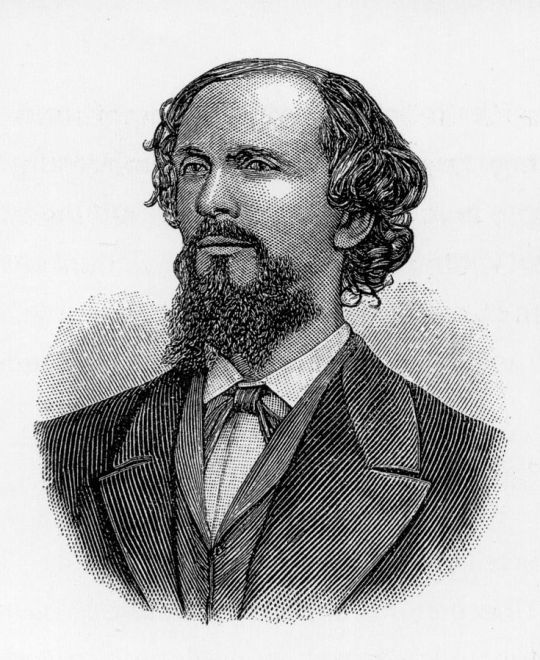
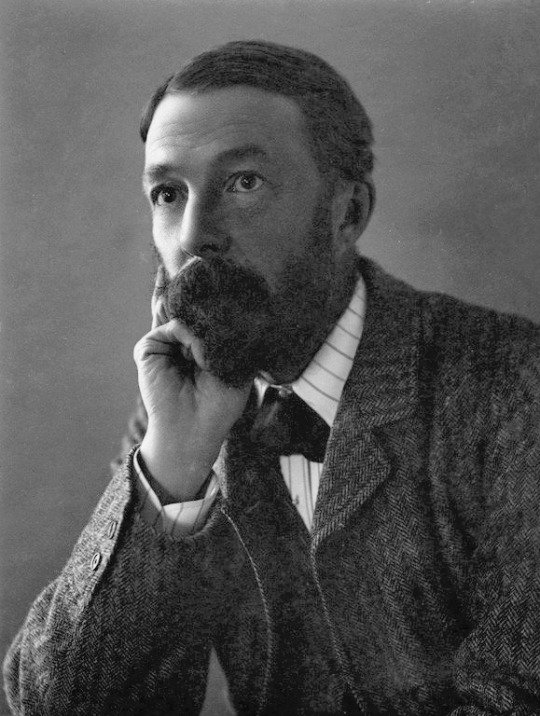

By the second half of the 19th century, that was starting to change. People like Karl Heinrich Ulrichs in Germany (on the left), and John Addington Symonds (middle) and Edward Carpenter (right) in the UK started to think of themselves as homosexuals - Ulrichs coined the term "Urning" which became "Uranian" in English. This period marked the beginning of organised campaigning for LGBT rights in the UK, though specific campaigning for lesbian and trans rights came later.
This means that in the 1890s setting of Dracula, any characters might think of themselves as "Uranian" or "Sapphic", or they might not yet have picked up that way of thinking. At a guess I'd expect Seward or van Helsing to be particularly aware of the new theory around homosexuality.
LGBT rights in law It was a mixed time for the legal position of LGBT people. The death penalty for sodomy was abolished in 1861 in England, Wales and Ireland (1889 in Scotland), and replaced with minimum 10 years hard labour. In 1871, two amab people, Boulton and Park, were tried for dressing as women, but the judge ruled that this was not an offence under English law (though he also said that he thought it should be).
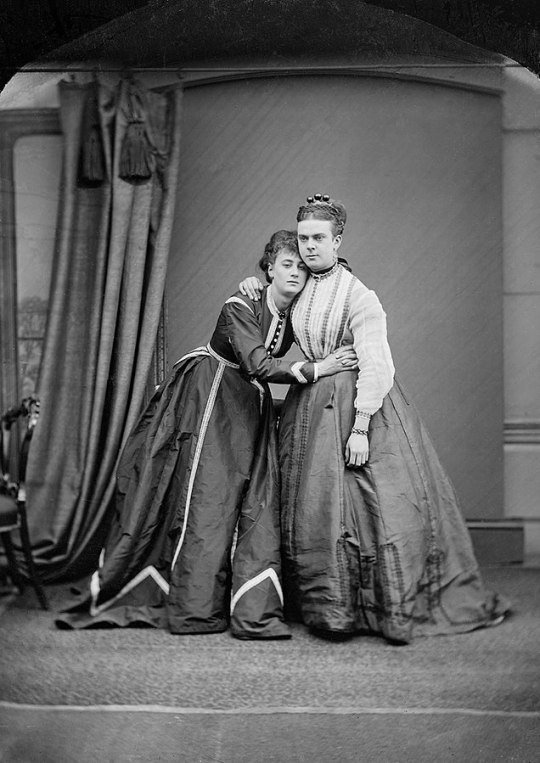
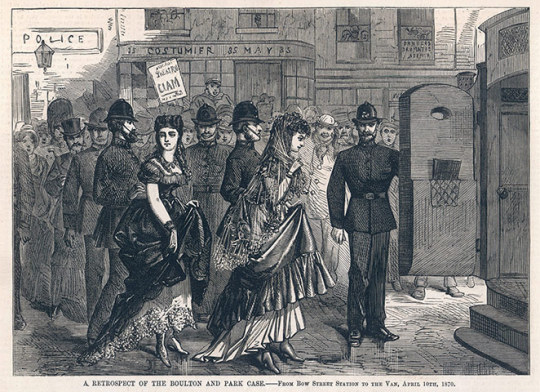
On the left: Fanny Park and Stella Boulton; on the right, the Illustrated Police News' depiction of their arrest.
And in 1885, the Criminal Law Amendment Act reduced the minimum sentence for gross indecency from 10 years' hard labour to two.
That said, before that act was introduced, there had to be a witness to any sodomy or gross indecency for it to be prosecuted. The Criminal Law Amendment Act changed that, so all private acts, arguably even love letters, could be prosecuted. So despite the reduction in sentences, this change to the law made life harder for queer men in the 1880s and 1890s. From a Dracula perspective, this means that people would be much more careful about what they wrote down - significant for a novel made up of documents.
Lesbian sex has never been illegal in the UK. (The idea that this was because Queen Victoria didn't believe in lesbianism is a myth). But in the 18th century there were a series of prosecutions of afab people who lived as men and married women. They were prosecuted for fraud when their birth sex was discovered, because they were perceived as having defrauded their wives. There were far fewer such prosecutions in the 19th century, possibly because of the belief that it was better not to create the publicity of a trial.
Victorian WLW There are HEAPS of notable Victorian lesbians and bisexual women, including a lot in the suffragette movement. So I've chosen a few examples based on there being good images on Wikipedia.

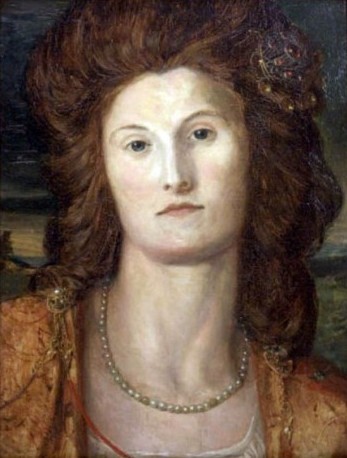
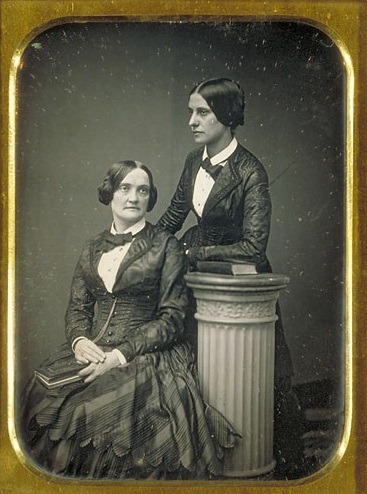
From left to right:
Margaret Benson and Janet (Nettie) Gourlay were Egyptologists who met at the excavation of the Precinct of Mut. Almost all of Benson's family preferred same-sex relationships.
Louisa Baring, Lady Ashburton, was briefly married to a man, but when she was widowed, began a 25-year relationship with American sculptor Harriet Hosmer. Harriet described herself as Louisa's "hubby".
Matilda Hays was a mixed-race writer and actress who had a relationship with American actress Charlotte Cushman, with whom she's pictured. Hays aimed to use her writing to improve the condition of women.
Victorian MLM Again, I've chosen people to highlight through the very representative method of good photos.
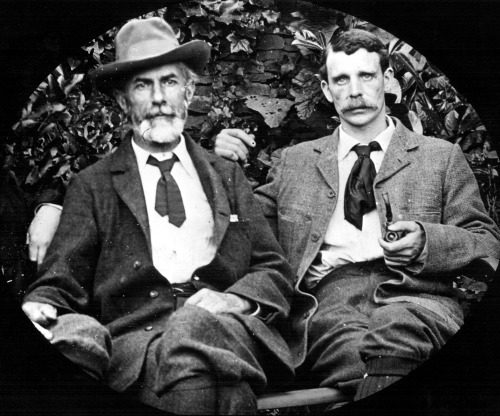
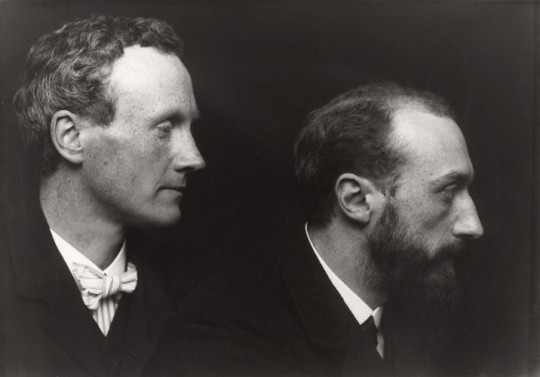

From left to right:
Edward Carpenter was a socialist, poet, philosopher and early gay rights activist who met his partner George Merrill on a train. The two men came from very different backgrounds: Carpenter from privilege, and Merrill from the Sheffield slums. Their 40-year relationship inspired the ending of EM Forster's novel Maurice.
Charles Ricketts and Charles Haslewood Shannon were artists who met as teenagers and lived together for more than 50 years. In the Times' obituary for Ricketts in 1931, their relationship was described as being "as remarkable as any of the great historic friendships, or the finest Darby and Joan examples of wedded felicity".
Ned Warren and John Marshall were art collectors who together were largely responsible for the Roman and Greek Art Collection of the Boston Museum of Fine Arts and the Metropolitan Museum of Art. Marshall married Warren's cousin, Mary Bliss, but only on the condition that the marriage would not be consummated. All three lived together until they died and were buried in the same tomb.
Trans Victorians I wrote last year about Dr James Barry, a Victorian trans man, in the context of whether Jack Seward could be trans. (The post is from October, but spoiler free).
Eliza Edwards was an actress who died in 1833 at the age of 24. Her body was autopsied, and discovered to be - in the words of the autopsy - "a perfect man", which had apparently not been known to any of her friends or colleagues.
Harry Stokes was a bricklayer in Manchester, who was outed as trans in newspaper articles during his divorce 1838 and again after his death in 1859. He became something of a figure of fun after being first outed, but met another woman who lived with him as his life, and was broadly accepted by the local community as a trans man.
It was only through chance that James, Eliza and Harry were outed (and in James Barry's case, despite considerable efforts on his part). There might well have been hundreds or thousands more people like them.
And Boulton and Park, who I mentioned above, have usually been treated as transvestite men by historians, but could equally - had they had the terms themselves - be identified as trans women. Some contemporary newspaper articles even used she/her pronouns for them.
Asexual Victorians Asexuality is tricky to spot in history, though even in 1896, German sexologist Magnus Hirschfeld was identifying it as a distinct phenomenon. What we do know is that more than 10% of women and a little under 10% of men in the 1890s never married, and in some cases that may well have been because they were asexual or aromantic.
From a Dracula perspective, family rumour held that Florence Stoker declined sex with her husband after the birth of their child. That may or may not have been true (and there's a ring of aphobia to some of the family's claims) but it shows how asexual people might also be found in apparently conventional marriages.
Sources British Library: A Short History of LGBT Rights in the UK British Library: A timeline of LGBT communities in the UK Girlfriends of Dorothy: A Timeline of Lesbian Rights UK 1601 - 2020s (note: the site intends to be trans-inclusive, but genders John Barry as female.) Open University: Lesbianism and the criminal law of England and Wales “Constant Companions” and “Intimate Friends”: The Lives and Careers of Maggie Benson and Nettie Gourlay Sapphic sexuality: lesbian myth and reality in art and sculpture British Library: Transgender identities in the past Warp and Weft: The extraordinary life of Harry Stokes British Academy: Happy Families? Coitus Interruptus: Sex, Bram Stoker, and Dracula 'Missing person' Florence Stoker added to DIB
767 notes
·
View notes
Text

'medusa' by harriet goodhue hosmer, 1854 in supernatural america: the paranormal in american art - robert cozzolino (2021)
90 notes
·
View notes